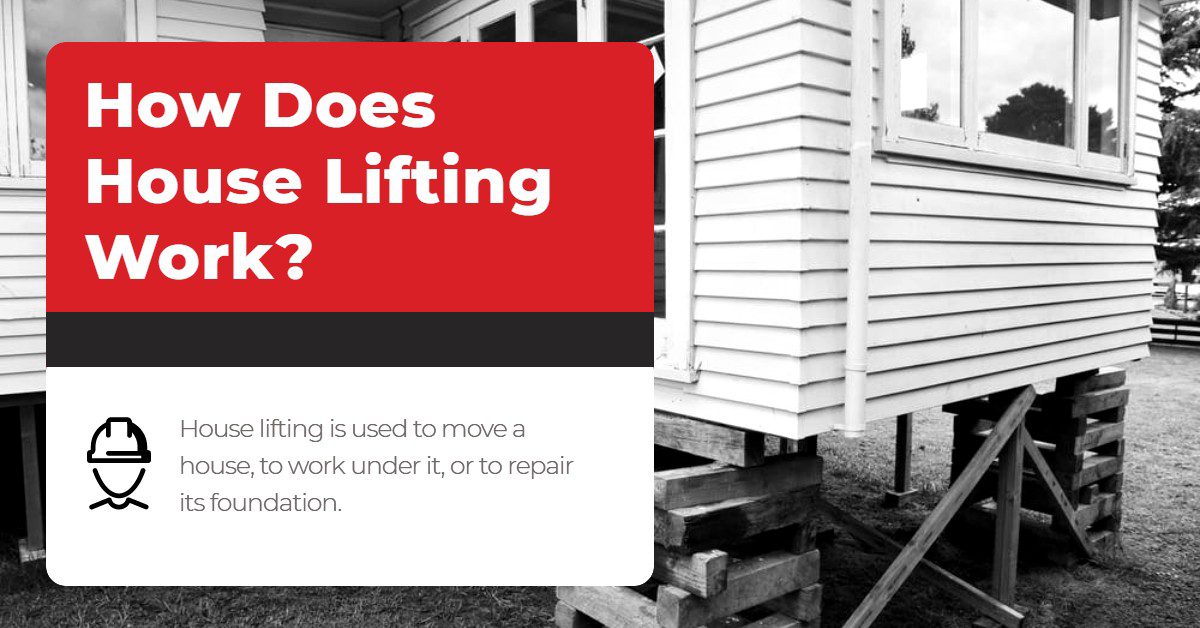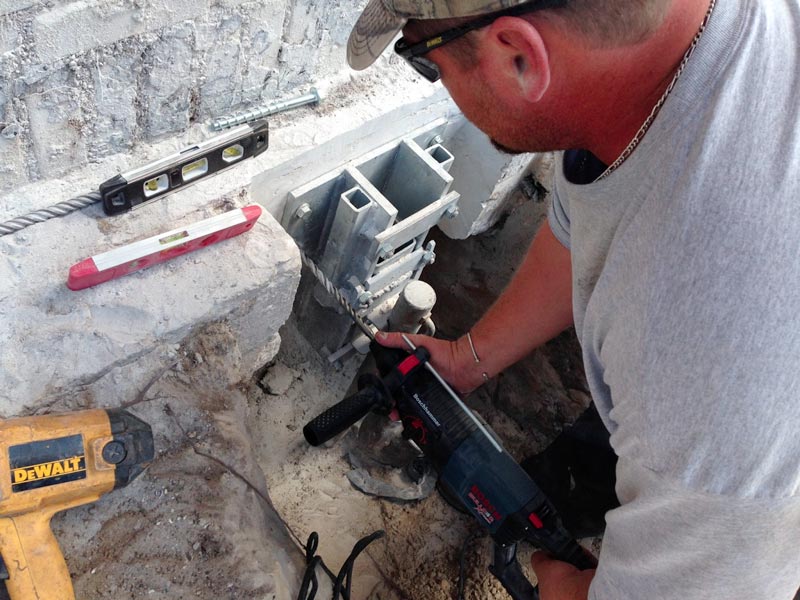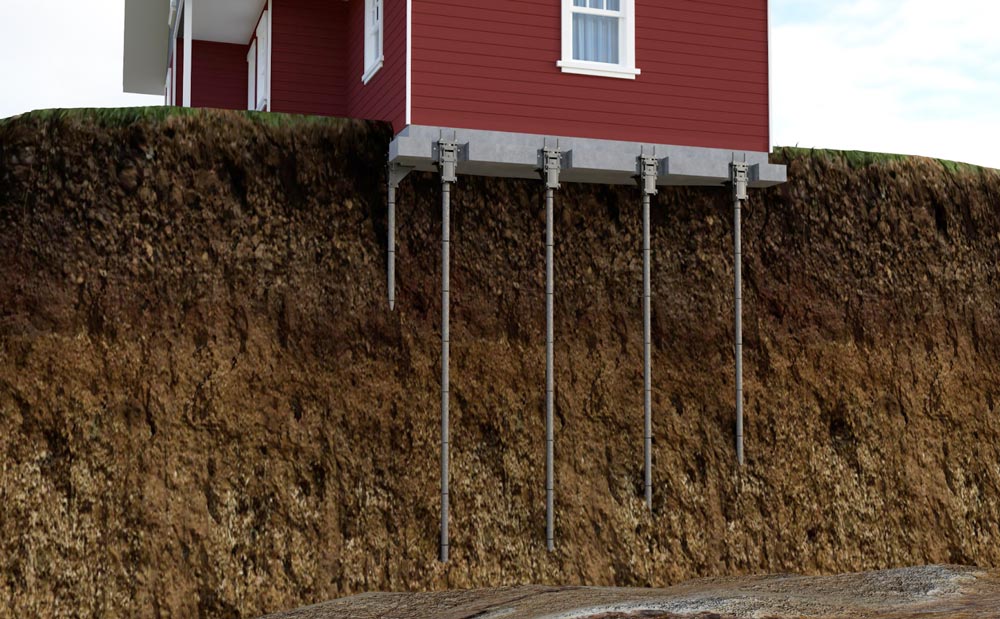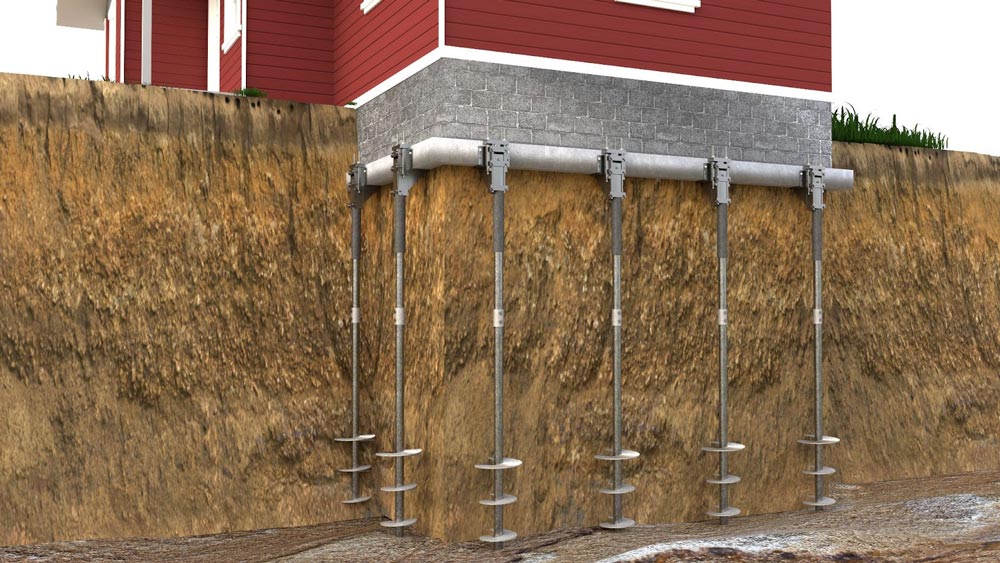Wondering how house lifting works? Well, that depends on what you mean by the term ‘’house lifting’’. The term ‘’house lifting’’ can mean a variety of things including lifting up a house to get it ready to move, lifting a house out of a flood zone, or lifting it up in order to do something under it. The term “house lifting” can also refer to a foundation repair method known as ‘’underpinning’’, which is what this article is about.
Underpinning: House Lifting in Order to Repair a Foundation
When a foundation is no longer able to support the house sitting on top of it, underpinning is used to strengthen and stabilize it.
There are a variety of reasons a foundation might have trouble supporting a structure including:
- The soil under the foundation has changed. This might be because of erosion, compaction, or the swelling and shrinking cycle that expansive soils go through when they absorb moisture and then dry out.
- Poor construction. The soil properties weren’t taken into consideration when the foundation was built.
- Natural disasters like floods and earthquakes have destabilized the foundation.
- Extensive excavation nearby has caused the foundation to destabilize. For example, your neighbor digs a hole for a new swimming pool too close to your foundation.
Two popular underpinning methods are push piers and helical piers.
Using Steel Push Piers
The procedure for house stabilization/lifting using steel push piers is as follows:
- The areas around the outside of the house where the push piers will be located are marked.
- Those areas are excavated until the footing is exposed.
- The footing is then notched so that it’s flush with the foundation wall.
- Steel brackets are attached to the footing.
- A hydraulic machine, which has been attached to the steel brackets, pushes sections of galvanized steel piers into the ground until the pier reaches load-bearing soil.
- When the piers are all in place, a hydraulic manifold system lifts the house back to level.
- The lifting rams are then removed and the holes are backfilled.
Using Helical Piers
Helical piers get their name from the fact that they look like big corkscrews. The procedure for house stabilization/lifting using helical piers is as follows:
- The areas around the outside of the house where the push piers will be located are marked.
- Those areas are excavated until the footing is exposed.
- The footing is then notched so that it’s flush with the foundation wall.
- The helical piers are installed while the technician monitors pressure and torque.
- When the pile reaches load-bearing soil, the pier is cut off at the correct height.
- A bracket is then installed on the pier so that it sits under the foundation.
- After all the piers are in place and the brackets have been installed, the house is stabilized or lifted back to near level using hydraulic jacks.
- The hydraulic jacks are then removed and the holes are backfilled.
5 Reasons Why You Might Want To Lift A House
To repair a foundation (underpinning)
As noted above, underpinning involves lifting a house to repair a damaged foundation.
To add a new floor
House lifting might also be done because the homeowner wants to add a new floor in order to make the house bigger. For example, someone might want to turn a one-story house into a two-story house.
To excavate a basement
You also might want to lift a house in order to create a basement. People do this because basements increase the property value and provide additional living space.
To keep the building safe from flooding
Houses are also lifted to keep the living area above the vast majority of floods, or to the required Flood Protection Elevation (FPE). Many houses were raised in the aftermath of hurricanes Katrina and Sandy.
Lifting a house in order to move it or work under it
Sometimes, for a variety of reasons, people want to move a house from one location to another. They might want to move a house for historical preservation, to get it away from an area that experiences frequent flooding, or because a new highway is being built nearby. Whatever the reason, this kind of house lifting involves lifting up the building, moving it to the new location, and then setting it down again.
Note: Foundation Professionals of Florida only performs underpinning services for foundation leveling. We do not lift houses for other reasons.
For more information about differential foundation settlement see House Leveling: A Simple (But Complete) Guide.




